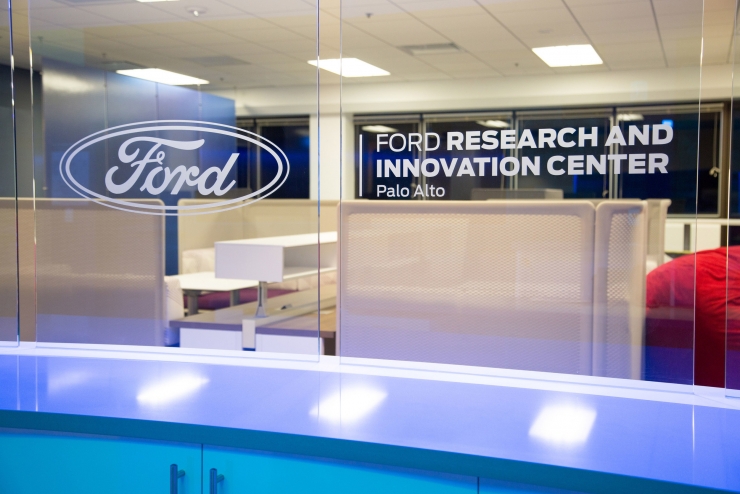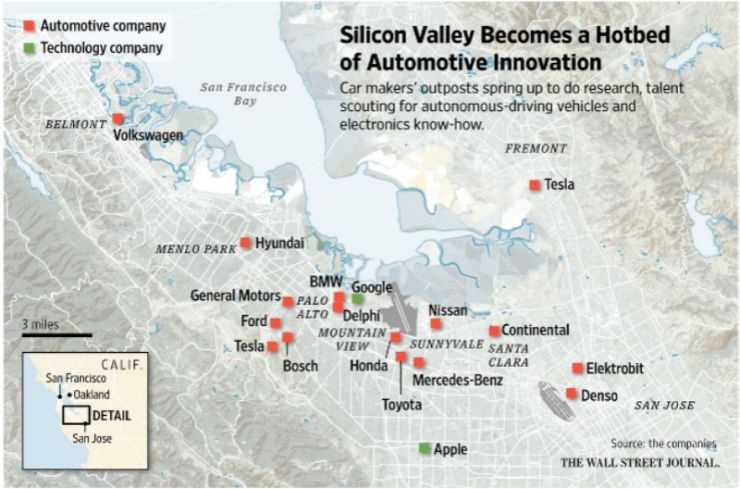
As an automaker, Mercedes-Benz came to Silicon Valley in 1995. Companies in the traditional automotive industries such as Honda, Mercedes-Benz, Volkswagen, and Bosch already have their own institutions here. At that time, these car companies came to Silicon Valley called "Technology Scouting" (technical investigation).
Compared with the long-established R&D lab, Ford’s lab in Palo Alto is insignificant, and it is not as large as the R&D institutions of other companies. Very early on, Ford CEO Mark Fileds told the outside world: "Ford is not a manufacturing company, but a technology company," "We need everyone to challenge the tradition and question the tradition. We need to take things for granted."
This old American car company established in 1903, relying on its more than a century of car constructors and the accumulation of several years of car networking, has made great strides in the area of ​​auto-pilot, which is now high hopes. It is expected that it will be common for vehicles in 2021. The service provides multiple fully automated driving cars.
Ford didn't want to wait any longer. "Because we couldn't find a technology that could ensure the driver's attention (when he didn't control the vehicle)", company chief technology officer Raj Nair said that he decided to achieve full automatic driving in one step without steering wheel and pedal. The fully automatic driving car will not accidentally appear on its product line after 5 years.
In fact, Ford spent many years in the field of automated driving, but only in the cooperative testing phase. At CES 2015 Mark Fields officially announced the development of a new vehicle intelligent autopilot technology. In the speech, he did not mention anything about increasing the sales of cars. Instead, he stressed that Ford needed to make a change and become a product innovation and mobile company, just as the founder Henry Ford started Business model like that.
On August 16, 2016, Ford Motor announced that fully self-driving cars will be put into commercial operation in 2021. It seems that for more than a year, their technical input and layout seems to give them great confidence. Of course, building a car does not satisfy Mark Fields’ ambitions. He hopes like many technology companies: Build a platform. Create a variety of services around the platform. This platform is the car itself, and in the future is its fully automated driving car.
In order to accelerate becoming a technology company, Ford has already been deployed; in particular, recent moves are frequent and not too small.
Self-explorationThe third generation of the Ford SYNC in-vehicle entertainment system has been released. Currently, the system integrates traffic monitoring, navigation and messaging functions to provide drivers with all the information they need while driving. Its first generation of products debuted at the 2007 North American Auto Show. Although the system was jointly developed by Microsoft and Maberia, its technical exploration is obvious to all. In the face of the challenges of Android Auto and Apple CarPlay, Mark Fields said he would not give up SYNC.
At that time, autopilot was not as hot as it is today. What we could do was only a few attempts at the smart system in the car.
Why Ford has become a company in Silicon Valley?
The landmark event was the formal operation of Ford’s research and innovation center in Palo Alto, California, in January 2015. The center is mainly focused on accelerating the company's innovation in vehicle connectivity technology, mobile travel, autopilot, consumer experience, and big data research. This is very much in line with the platform plan that Mark Fields is arguing.
In March of the same year, at the same time in Palo Alto, Ford announced the establishment of a wholly-owned subsidiary: Ford Smart Mobility LLC, responsible for the design, development, operation, investment and growth of commuter services. Help Ford's core business, while understanding consumers in different ways. This is to provide software reserves for Ford's car sharing services, to meet the competition, and to have a share of the future mobile travel market.
Some people think that Ford has been very resolute since it announced its transition to a mobile technology travel company. It has not stopped because of its identity as a car manufacturer. Its business model and development strategy are advancing at a certain pace. Therefore, Google, which we call the automotive world, is not an exaggeration.
Investment and cooperation 
On August 16, 2016, the government announced its 2021 strategic goals and confirmed four investments and cooperation. As an important measure to achieve this goal, it aims to expand its leadership in advanced algorithms, 3D mapping, LiDAR sensors, and radar and camera sensing devices:
Investing in Velodyne: With Baidu investing $150 million in laser radar vendor Velodyne, the partnership between Ford and Velodyne began more than 10 years ago and was one of the first companies to use LiDAR for high-precision mapping and autonomous driving.
Acquiring SAIPS: SAIPS Corporation has developed several algorithmic solutions for image and video processing, deep learning, signal processing and classification. This expertise will help Ford Motors play an important role in the learning and integration of autonomous vehicles into the surrounding environment.
Working with Nirenberg Neuroscience LLC: This will provide a powerful machine vision platform for navigation, object recognition, face recognition, and other functions in multiple potential applications. This cooperation will help bring artificial intelligence to the machine learning module of the autopilot car virtual pilot system.
Investing in Civil Maps: Civil Maps is a high-precision 3D mapping company based in Berkeley, California, which provides a new option for Ford to develop 3D high-definition maps in an autonomous vehicle environment.
In addition, in May of this year, Ford’s 183 million U.S. dollars was invested in Pivotal Software, a cloud computing company. Like high-precision map capabilities, cloud computing capability is a key capability for automatic driving, and it will also serve car networking.
In July, Ford announced a partnership with MIT to co-sponsor a special research program including machine learning and automated driving systems. The purpose of this research project is to prevent collisions and to improve the autonomous circuit planning of vehicles. This will add to Ford’s autopilot technology.
The strength of Ford's self-driving cars is largely due to the above layout. In addition, Ford has invested heavily in automotive research and development.
According to the "2015 Global Innovation Top 100 Report" published by PricewaterhouseCoopers, the consulting firm, Ford ranked 15th among global companies in terms of R&D investment, and ranked 4th in the automotive industry. Among the top 20 companies with the highest R&D investment in the world, the ratio of R&D expenditures for automotive companies is 4.8%, which is second only to the largest Volkswagen company in the automotive R&D ratio.
According to media commentary, automakers have a “window period†before the era of automated driving. Automobile companies with large cash holdings can invest in potential suppliers and technology companies. Promote the progress of automatic driving.
This is exactly what Ford has to do to become a Fan of Silicon Valley.
Talent, location and competition
Car manufacturers are stationed in Silicon Valley
Ford Motor Co., obsessed with IoV and autopilot technology, is also preparing to greatly expand its business in Silicon Valley: Talent, the number of Palo Alto team members will double in 2017; geographically, will broaden the existing research and innovation center Establish a professional park.
Of course, Ford CEO Mark Fields is not primarily looking for talent here, but the entire ecology of Silicon Valley.
Ken Washington, vice president of research and forward-looking engineering at Ford Motor Co., said in an interview that “Our goal is to be a part of the community. Today we are actively cooperating with more than 40 start-up companies and have established close ties with many incubators. All will help us accelerate the development of technology and services."
The collaboration between Ford and the Silicon Valley ecosystem is deepening and it has become a Silicon Valley technology company.
Of course, Ford faces pressure is not small, Google, Apple, Tesla, BMW, General Motors and Uber and other Internet companies and are currently the first to deploy in the field of automated driving:
A joint venture between BMW and Intel and Mobileye components will develop a completely unmanned car by 2021.
Fiat will work with Google to develop an autonomous van;
Toyota shares Uber;
Volkswagen invests in taxi booking service company Gett;
General Motors invests in Lyft's $500 million taxi service company and acquires Cruise Automation's Cruise Automation;
......
Collaborating, investing, or acquiring automotive-related technology companies seems to be a patent for automakers to explore the future of automobiles.
The business model pioneered by Henry Ford a hundred years ago is unlikely to continue for a hundred years today. Today, car manufacturers have set up their R&D bases in Silicon Valley, and they are more likely to explore the future of cars. This is the only way for Ford.
This article is a new intellectual article and welcomes attention to new intellectual driving. WeChat added "AI-Drive" or "New Driver" to subscribe to the public number.

